 Written by ContentPowered.com
Written by ContentPowered.com
When you’re in the market for a product, how do you decide which of the many brands making that product to go with? Do you pay attention to the TV commercials or ads in your browser? Do you go reading reviews on Amazon or Google’s shopping center?
No, most people skip the easily modified and “corruptible” methods and instead choose to ask their friends and family. They turn to social media and post a question, ask for recommendations, or just look to see what the people they follow are using.
This, of course, led to the development of influencer marketing. Brands want to be the one recommended by your friends and family. Of course, your mom probably doesn’t have more than a few dozen or a few hundred Facebook friends – depending on the size of your family, probably – so brands are pretty unlikely to target her for marketing.
What brands do is find the people with millions of followers and try to get THOSE people to promote their product. If Kim Kardashian or Chris Pratt or your favorite Instagram model happens to post about some product they like using, well, maybe you’re more likely to go buy that product.
Who cares if the brand paid for that mention?
That mention is called a shoutout, a social mention, a tag; it goes by many names. Many brands want them, and for every desire, there are facilitators. Companies have sprung up with the sole purpose of connecting the people willing to accept payment for shoutouts with the people willing to pay for them. You might not get Kim Kardashian – you’d need to talk to her agent, probably – but you’ll be able to find people with anywhere from 10,000 followers to 10 million. Whether or not you have the budget for it, well, that’s another story.
Enter: Shoutcart
That middleman relationship is where Shoutcart comes into play. Shoutcart is one of the larger and more visible companies working in the influencer marketing niche. They purport to hook you up with influencers who, combined, reach over 400 million active followers.
Is Shoutcart worth the money? Well, I’ll get to that. First, though, let’s take a look at what they claim to offer, and a few looks into what they actually provide.
Shoutcart, like any good web business, puts a bunch of selling points right on their homepage. They call themselves the number one platform for influencer marketing, and who am I to dispute it? I don’t have access to the inner workings of every such platform.
They promote themselves as having “top influencers”, though they don’t quite specify what that means. They analyze influencers in their network for niche, activity, and authenticity, and give them a proprietary score. They also claim a 100% satisfaction guarantee; they don’t pay the influencer until your shoutout is actually published, meaning the influencers can’t just take your money and run.
No marketing platform would be complete without some form of analytics, and Shoutcart is no different. They track the messages you pay for and the statistics achieved from it, so you can see exactly what you’re paying for and determine if it’s worth continuing.
Mechanically, it’s quite a simple platform. You register an account for access to their library of influencers. Then you browse that library and find influencers in your niche or who you think will be relevant. You can filter their list by audience size, category, follower demographics when available, and even just keywords. The demographics available are basic; language, country, age, gender, and not a lot else.
Once you find an influencer whose audience seems to fit yours, you add them to your cart and start creating an order. An order is essentially just the social media post you want the influencer to upload. You can make an image or video, you can write the copy with your username and link, and you choose a schedule for it to be posted, within reason. Influencers are given a 72-hour window in which to post your order to earn their fee.
You can organize your orders into campaigns with multiple influencers if you choose, or take them one purchase at a time.
If you take a look into the “for influencers” side of the site, you can see a little more detail about the inner workings of the platform. Shoutcart appears to take a minimum of 10% of the fee for an influencer’s post. They work on an escrow model, so you pay Shoutcart, and Shoutcart holds the money until either the order is fulfilled or cancelled. That way you can’t get a shoutout and revoke payment to scam the influencer, and likewise they can’t scam you.
Notably, influencers are allowed to cancel orders if they think the shoutout doesn’t fit with their brand image. If it’s outside their niche, if it’s too spammy or represents a company the influencer simply refuses to support, well, they can refuse the option.
Shoutcart also has an affiliate program. In the interest of disclosure, I am not using that program for this article; none of the links to their site are tagged in any way. Affiliates can refer both businesses and influencers, and can earn up to 30% on shoutouts sold by people they refer. I’m sure they have a lot of details in their terms of service for the affiliate program, but you can investigate that yourself.
Investigating the Audience
We’re looking at Shoutcart from the business perspective. The idea being to determine whether or not purchasing a shoutout is worth the price.
First of all, if you don’t create a (free) account and log in, all you can see is the username, profile picture, follower number, and ShoutScore for each influencer. You have limited access to filtering tools, and you can’t see the type of account, the type of channel, or the price for the shoutout. All of that information, plus all the other filters, become available once you register an account.
Registration is easy enough. All you need to do is make an account, which is a two-step form with email verification. They ask for a few things, like brand website, phone number, and name attached to the brand, but a lot of the fields aren’t actually required. Add in what you feel you want to add, and fill out the rest if you decide to actually buy a shoutout.
Shoutcart has influencers in a variety of niches. They allow you to choose whether you want shoutouts via Instagram posts, Instagram bio links, or Twitter posts. You can also choose between personal or business pages for the shoutouts. Categories range from humor and fashion to fitness and food. Language selection is somewhat limited; it includes Dutch, English, German, Hindi, Portuguese, Russian, and Spanish. Countries, likewise, are limited to Australia, Brazil, Germany, India, the Netherlands, Russia, Spain, the United Kingdom, and the United States. I actually appreciate this; they only list areas they have influencers in, rather than just copying one of those full lists for similar forms.
The two non-standard filters are for active hours and for their ShoutScore. Active hours come in four ranges, Morning, Afternoon, Evening, and Night. They are, respectively, 6am to noon, 1pm to 6pm, 6pm to 11pm, and 1am to 6am. I suppose people who are only active from midnight to 1am aren’t included, or something. Who knows.
Shoutscore ranges from 0 to 30. The lowest I’ve seen in a cursory search is .17, while the highest is 29.72. In fact, as of writing this, there are only three accounts with scores above 25.
Let’s look at some of the accounts they offer, actually. Here are those top three:
- 9.carat on Instagram. This account has 15,700 followers and has the highest score at 29.72. Their account on Instagram has the same metrics, and posts humorous videos of all kinds. It appears like they used to post a lot of #aesthetic photos, but pivoted into video around April of this year. Their price is $10, which is very reasonable.
- Viakavish on Instagram. This account has 228,000 followers, and their shoutout price is $250. They appear to be a cartoonist posting largely doodles and simple animations, and I don’t actually see any recent shoutouts on their page.
- Marcy on Instagram. This account appears to be a musician and Youtuber from Venezuela. They post their own content for the most part, and I don’t see any recent shoutouts here either. They have almost 50,000 followers and their price is a mere $20.
On the other end of the spectrum, here are some lower scoring choices.
- Inhibition on Twitter. This account has a ShoutScore of 0.26, and their price is $10. Shoutcard claims they have 123,000 followers. It appears to be a personal Twitter account for some dude out in Los Angeles.
- Atpwtamemes on Twitter. This account has a Shoutscore of 1.2 and charges $10 for a shoutout. Scoutcart claims they have 3,600 followers. They’re a narrow niche of tennis memes.
- Drdavinahs on Instagram. Shoutcart gives this account a 3.9 and they have set a price of $30. They have 22,100 followers and primarily post about various health foods, recipes, and supplements, probably with some MLM involved if you dig.
So one thing we can learn here is that ShoutScore is low for the people who don’t seem to actually post shoutouts very often. Either no one has decided to buy from them, or they have rejected all offers. How they’re still on the site, I don’t know. Shoutcart does claim to do daily purges of their database to ensure active influencers, even if their definition of influencer is a bit odd.
I also decided to see if any of the people in their network have an actually high follower count. Are there any who have more than five million followers? Surprisingly, yes.
- Bestvines on Instagram has 8.7 million followers, a ShoutScore of 9.89, and a price of $800 for a shoutout. As you might expect, they post old Vines to re-live the glory days of that dead platform.
- Theloversayings on Instagram has 8.1 million followers and a ShoutScore of 8.31. Their price is $230, significantly lower than the first place account, which I chalk up to the fact that their account is set to private. I have no idea how active they are behind the wall.
- Notcommonfacts on Instagram has 7.7 million followers, a ShoutScore of 9.22, and a price of $220. Their account is also private.
- Autocorrects on Twitter has 5.5 million followers, a ShoutScore of .08, and a price of $120.
Overall, Shoutcart focuses much more heavily on Instagram than on Twitter. They have a variety of accounts with different follower levels, but the majority of them range from 10,000 to a few hundred thousand, with the accounts in the millions being a minority.
Is Shoutcart Worth The Price?
There’s no denying that influencer marketing can be quite powerful. The problems I see with Shoutcart are that most accounts aren’t all that great, and while shoutouts are cheap for them, I don’t see you getting much in the way of returns. On the other hand, the majority of the reasonable accounts have prices under $1,000, and that’s still a decent budget for a suitably large brand. If you could get a good shoutout on BestVines and get decent returns, you could come out ahead.
The real question is whether or not you can actually get those returns. I haven’t actually paid for any shoutouts, but I imagine the rate of returns is dependant on all of the usual metrics: how close they are to your niche, how well you can craft a post, and how compelling your call to action ends up being. I recommend running a few experiments with the mid-level accounts before going all-in on a big one, but it’s entirely reasonable to spend $50 on testing to see if the platform works for you.
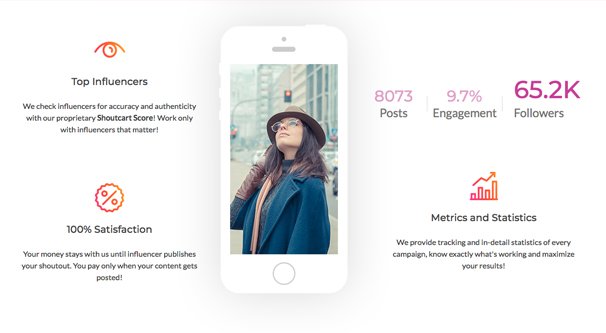
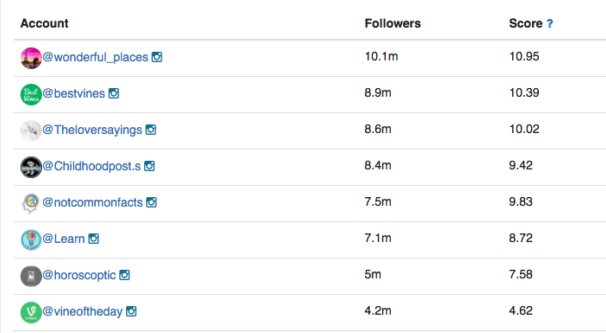
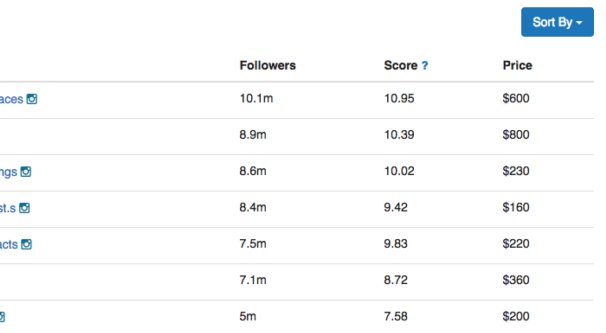
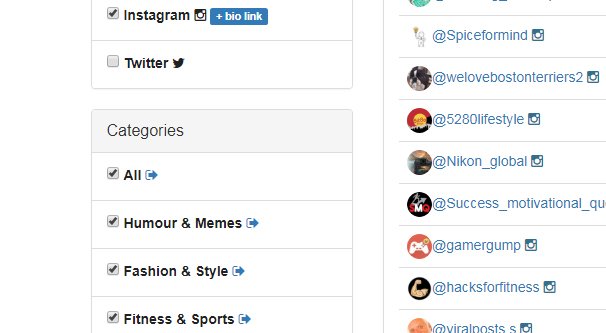
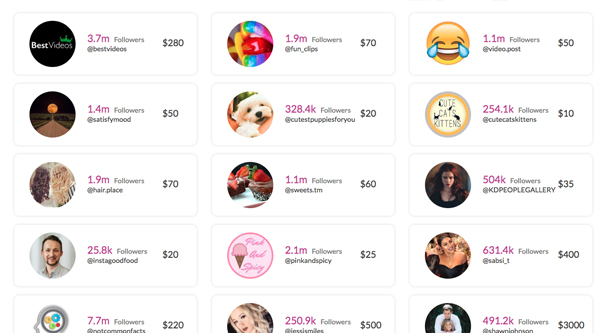

I used shoutcart for a couple of pages, big pages.. we produced a real high quality video to be posted at high engaging pages. The results were catastrophic, no new followers or link clicks. A real waste of money. Definitely do not recommend shoutcart!
But wouldn’t this also depend on the influencers you worked with? Just because your experience with that individual wasn’t effective, I wouldn’t assume the whole system is broken? Curation between the two parties is key
I join Pam and I would add that it is also impossible to remove the present on the site. The latter requires you to spend all of what you have paid even if what they offer you are not satisfied!
How would you know if Shoutcout is truly worth using if you never used the actual service they provide? This is more like an informative article on what Shoutcart is all about. I thought this review, going by the title, was from someone who used the service and had results to share. I think that’s a bit deceptive on your end.